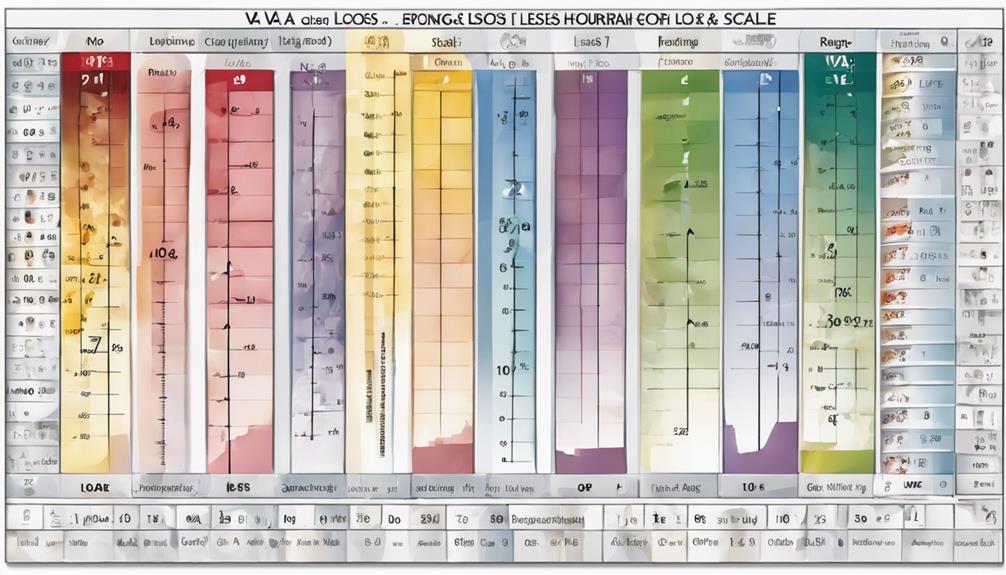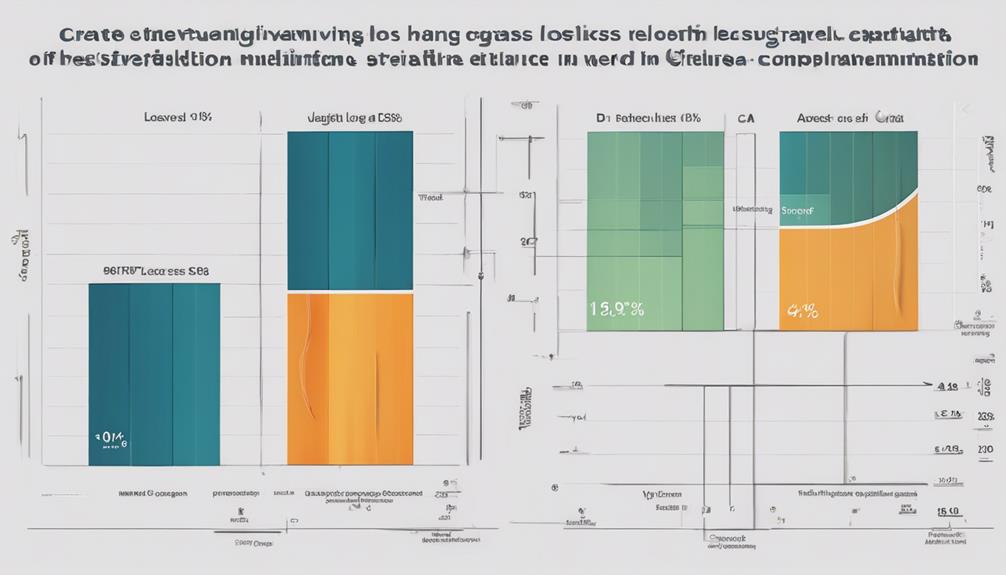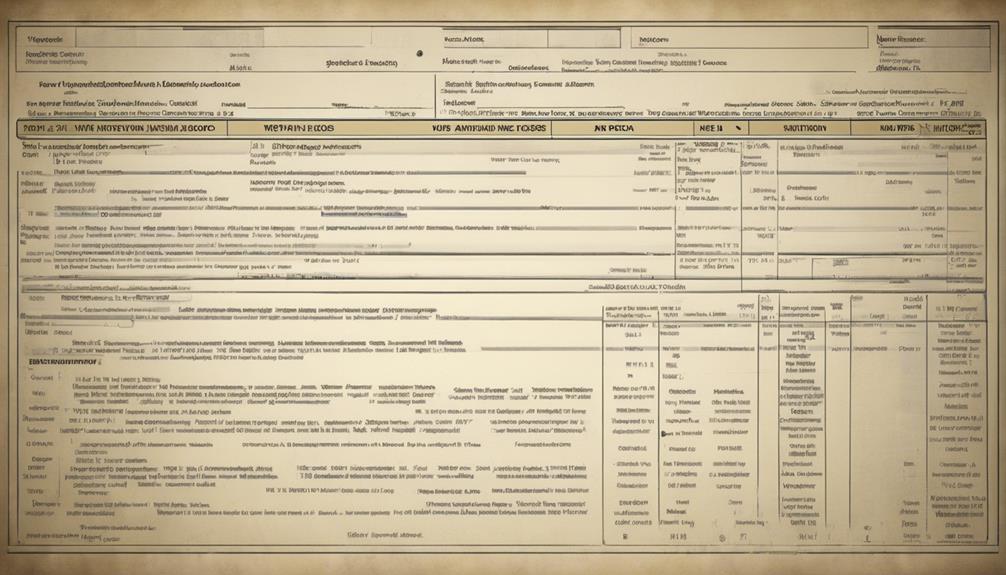Understanding the VA Hearing Loss Rating Scale can feel like deciphering a complex puzzle, given its intricate nuances and specific criteria.
However, understanding this system is crucial for veterans seeking rightful compensation.
Delving into the nuances of hearing loss ratings can shed light on how to effectively present one's case and maximize benefits.
Let's explore how this guide can be a game-changer for veterans seeking support and recognition for their service-related hearing impairments.
Key Takeaways
- VA rating scale ranges from 0 to 100 percent based on audiometry and speech tests.
- Different types of hearing loss recognized for VA benefits evaluation.
- Evaluation process includes tests without aids and reviews for service connection.
- Strategies to maximize benefits include documentation, treatments, and additional evidence.
Understanding VA Hearing Loss Rating Scale
Understanding the VA Hearing Loss Rating Scale is crucial for veterans seeking disability compensation and benefits. The VA rating scale ranges from 0 to 100 percent, reflecting the severity of the hearing impairment. This rating takes into account results from both puretone audiometry and speech discrimination tests.
Veterans with higher ratings indicating more significant hearing loss may be eligible for additional support and benefits. By utilizing a standardized system, the VA ensures consistent assessment and rating of hearing disabilities. These ratings play a vital role in determining the level of service-connected disability a veteran may have and the benefits they're eligible for through the VA.
Therefore, comprehending how the VA rating scale operates is fundamental for veterans navigating the process of seeking compensation and support for their hearing loss. It provides a clear framework for understanding the impact of hearing loss on a veteran's overall health and well-being.
Types of Hearing Loss Recognized
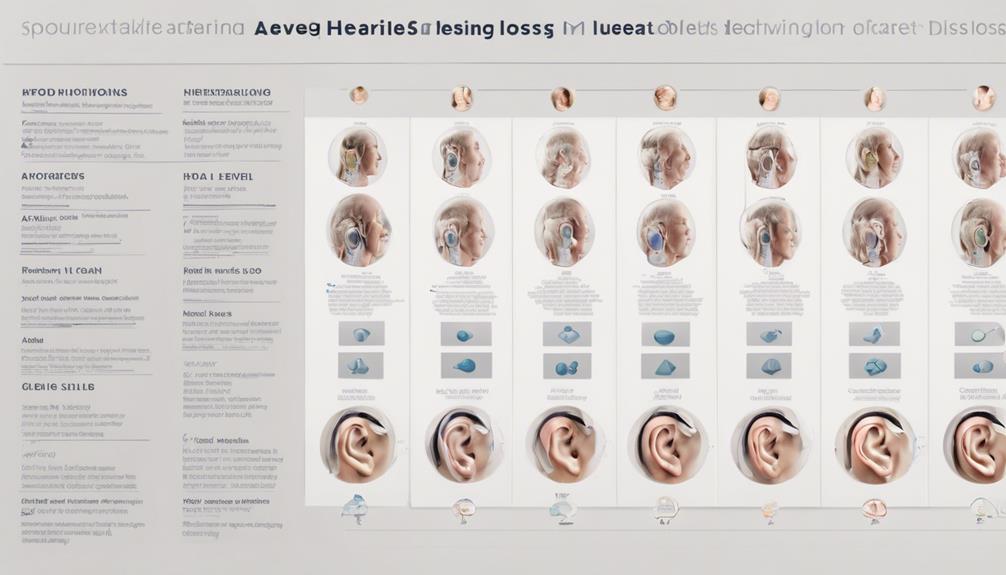
Recognizing various types of hearing loss is essential for assessing eligibility for VA disability benefits and determining appropriate interventions. When it comes to hearing impairment, the VA recognizes several types, each with its unique characteristics and implications. These include:
- Sensorineural Hearing Loss: This is the most common type, often resulting from inner ear damage due to factors like aging, exposure to loud noises, infections, genetics, or certain medications.
- Conductive Hearing Loss: Involving damage to the middle ear ossicles, this type is often treatable with medical or surgical interventions.
- Mixed Hearing Loss: Combining aspects of sensorineural and conductive damage, individuals may experience muffled sounds and difficulty understanding speech.
- Blast Injuries: Trauma from blasts can lead to any type of hearing loss, impacting eligibility for VA disability benefits.
Understanding these distinctions is crucial for accurately assessing individuals, determining appropriate interventions such as cochlear implants, and conducting necessary tests like audiometry and speech discrimination tests.
VA Hearing Loss Evaluation Process
The VA hearing loss evaluation process involves comprehensive tests such as speech discrimination and puretone audiometry to determine the extent of impairment accurately. These evaluations are conducted without the use of hearing aids to ensure a precise assessment.
The Department of Veterans Affairs (VA) carefully reviews medical records to establish service connection and evaluate the severity of hearing loss. Based on the results of the hearing tests, disability ratings are assigned according to the VA rating schedule, which outlines specific criteria for determining the level of impairment.
These disability ratings significantly impact the eligibility for benefits that veterans may receive. By undergoing a thorough evaluation process, veterans can receive an accurate assessment of their hearing loss, ensuring that they're appropriately compensated for their service-related disabilities.
Maximizing VA Hearing Loss Benefits
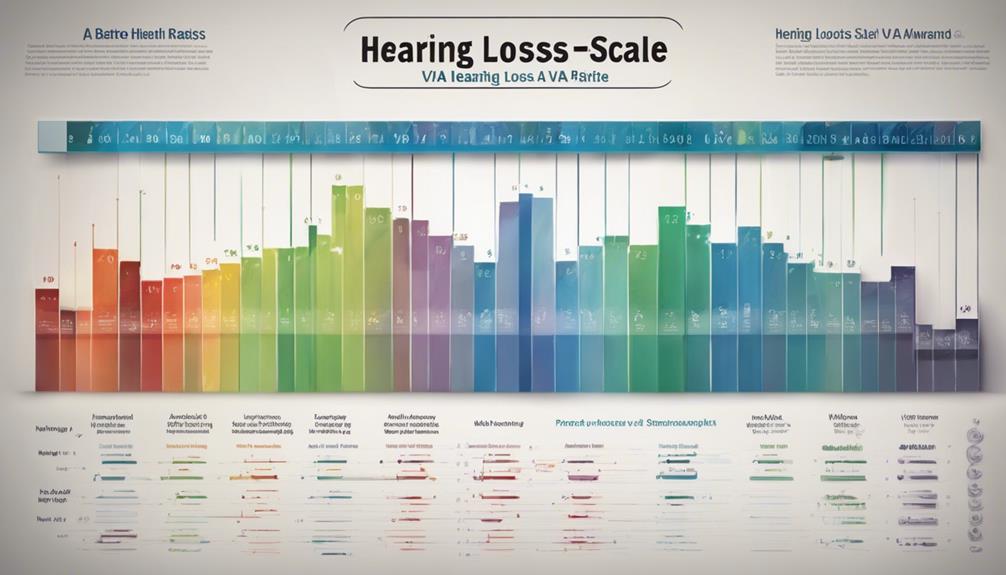
To optimize VA hearing loss benefits, veterans can strategically leverage thorough documentation, recommended treatments, and additional evidence to bolster their claims efficiently. When seeking to maximize VA hearing loss benefits, it's crucial to consider the following:
- Provide Comprehensive Documentation: Ensure all medical records related to hearing loss, tinnitus, and ear conditions are organized and submitted accurately.
- Follow Recommended Treatments: Adhere to prescribed treatment plans for hearing loss and tinnitus to demonstrate compliance with medical advice.
- Submit Additional Evidence: Include statements from fellow service members, family, or friends who can attest to the impact of hearing loss on daily life.
- Work with a Qualified Representative: Collaborate with a VA representative or attorney experienced in handling VA hearing loss claims to navigate the process effectively.
Increasing Your Hearing Loss Rating
How can one effectively enhance their VA disability rating for hearing loss? When seeking a higher VA disability rating for hearing loss, providing additional evidence is crucial. While test results are essential, they may not fully capture the impact of hearing loss on daily life. Submitting supporting evidence such as lay testimonies from family or coworkers can strengthen your VA disability claim. Details about how hearing loss affects your ability to communicate, work, and engage in daily activities can also be influential. Consider incorporating Controlled Speech Discrimination results or statements from colleagues to support your case for a higher rating. Remember, a comprehensive approach including various forms of evidence can significantly increase your chances of receiving the compensation you deserve.
| Column 1 | Column 2 | Column 3 |
|---|---|---|
| Additional Evidence | Lay Testimonies | Detailed Impact |
| Supporting Test Results | Controlled Speech Disc. | Statements from Colleagues |
| Daily Life Challenges | Work and Communication | Higher Rating Chances |
Frequently Asked Questions
How Hard Is It to Get a VA Rating for Hearing Loss?
Getting a VA rating for hearing loss can be challenging. The process involves thorough evaluation and submission of detailed medical evidence. The severity of the condition determines the rating percentage, ranging from 0% to 100%.
Higher ratings require more significant impairment for increased benefits. Veterans must provide comprehensive documentation to support their claim. It's important to meet all requirements to increase chances of a successful rating.
What Are the VA Guidelines for Hearing Loss?
We've delved into the VA guidelines for hearing loss, which rely on audiometry and speech tests to determine disability ratings. These ratings range from 0 to 100%, reflecting the extent of hearing impairment.
The specific criteria used by the VA help assign appropriate ratings based on the severity of hearing loss and speech discrimination ability. Understanding these guidelines is vital for veterans seeking compensation for service-related hearing impairments.
Is 30% Hearing Loss a Disability?
Yes, 30% hearing loss is considered a disability by the VA. This level of impairment indicates significant challenges in daily communication and functioning. Individuals with a 30% hearing loss rating are entitled to compensation and benefits due to their moderate hearing impairment.
Higher ratings reflect more severe hearing loss, leading to increased VA disability benefits. Veterans with a 30% hearing loss rating may qualify for additional support and accommodations to improve their quality of life.
What Is the C&P Exam for Hearing Loss?
We conduct a C&P exam for hearing loss to evaluate the severity of impairment. This assessment is crucial for determining eligibility for VA disability benefits and includes tests like puretone audiometry.
The exam is performed without hearing aids to accurately gauge impairment levels. Results from this evaluation significantly influence the disability ratings assigned.
Conclusion
In conclusion, it's crucial for veterans to understand the VA Hearing Loss Rating Scale in order to navigate the benefits and support available to them.
One interesting statistic to note is that approximately 60% of veterans who apply for hearing loss benefits receive a disability rating of 10% or higher, emphasizing the importance of seeking assistance and maximizing one's benefits through the VA evaluation process.
It's essential for veterans to advocate for themselves and ensure they receive the compensation they deserve.

